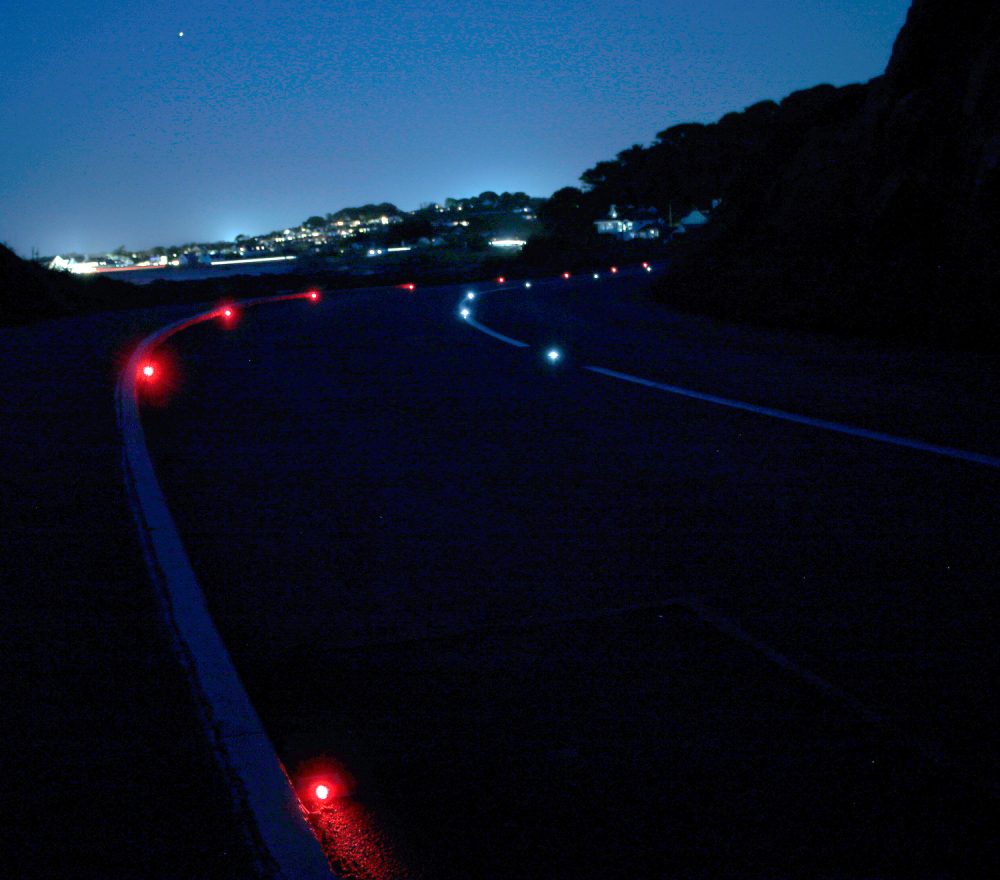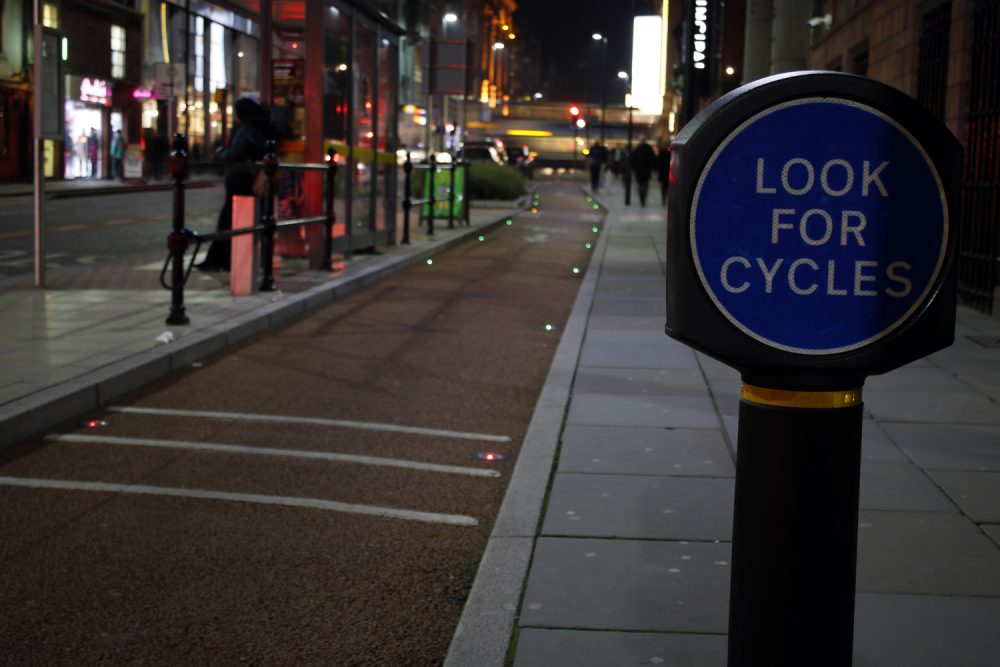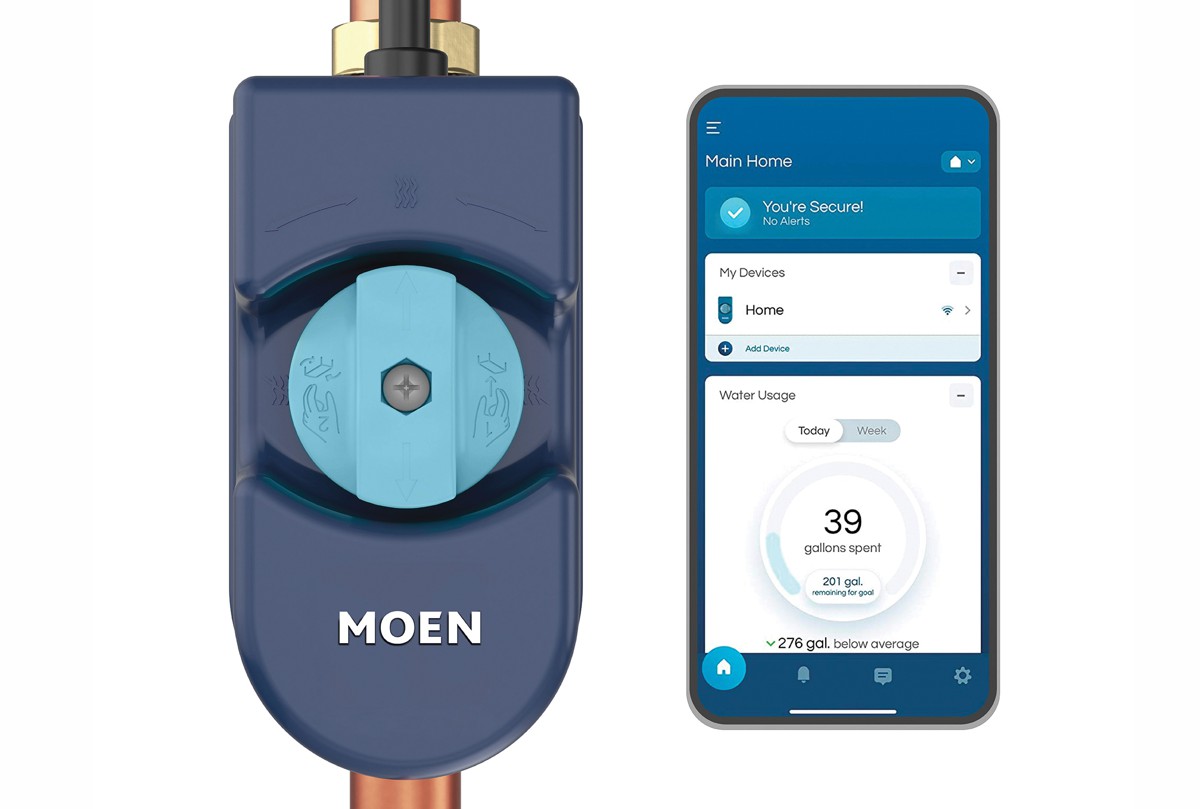A Clearview of everything you need to know about improving route safety
Clearview Intelligence has been delivering road safety innovations for many years, and here we look at everything you need to know about improving route safety.
The first fatal motor car accident in the UK occurred in 1899; since then governments, car manufacturers, charities and technology companies have all worked to prevent as many road deaths as possible.
However, as car ownership and travel increased, so too did the number of fatalities on the roads. Road traffic rose drastically from 28.9 billion vehicle miles driven in 1949 to over 320 billion today. The number of people killed on the road rose similarly until it peaked in the 1970s.
Since then, the overall trend has been a reduction in the number of people killed on the road up until 10 years ago when the trend in the number of fatalities flatlined.
Road safety today: good but not good enough
The most recent (2017) statistics from the Department for Transport (DfT) reported 1,793 road deaths in the UK in 2017. The UK has one of the best road safety records in Europe, joining Norway, Sweden and Switzerland in having fewer than 30 road deaths per million inhabitants.
That said, the cost of a single fatal accident is estimated at over £2 million and in 2017 the cost of all road crashes was estimated at over £35 billion. This equates to almost two percent of GDP. The financial impact of these accidents is clearly huge, not to mention the human suffering that follows any accident.
So, we can’t rest on our laurels; we need to strive to reduce accidents as far as possible. The UK Government no longer has official casualty reduction targets, but both Highways England and Transport for London have documented their aspirations that no one is killed on their roads by 2040. Local authorities are similarly committed to reducing accidents on their networks.
But with 249,700 miles of road and nearly 2,000 deaths in the UK where do we even start to tackle road safety issues?
The DfT document the contributory factors to reported accidents each year, which provides one possible starting point for prioritising route safety interventions.
Here is a list of the most prevalent (contributed to 20 or more fatal accidents) factors reported in 2017:
- Loss of control; 27%
- Driver/Rider failed to look properly: 26%
- Driver/Rider careless, reckless or in a hurry: 17%
- Poor turn or manoeuvre: 15%
- Exceeding speed limit: 14%
- Driver/Rider failed to judge other person’s path or speed: 13%
- Pedestrian failed to look properly: 10%
- Travelling too fast for conditions: 9%
- Driver/Rider impaired by alcohol: 9%
- Driver/Rider illness or disability, mental or physical: 7%
- Aggressive driving: 7%
- Driver/Rider impaired by drugs (illicit or medicinal): 7%
- Distraction in vehicle: 5%
- Swerved: 5%
- Pedestrian failed to judge vehicle’s path or speed: 5%
- Pedestrian impaired by alcohol: 4%
- Slippery road (due to weather): 4%
- Fatigue: 4%
- Pedestrian wearing dark clothing at night: 3%
- Pedestrian disability or illness, mental or physical: 3%
- Learner or inexperienced driver/rider: 3%
- Pedestrian careless, reckless or in a hurry: 3%
- Road layout (eq. bend, hill, narrow road): 3%
- Sudden braking: 2%
- Driver using mobile phone: 2%
- Dangerous action in carriageway (eg playing): 2%
- Dazzling sun: 2%
- Rain, sleet, snow, or fog: 2%
- Crossing road masked by stationary or parked vehicle: 2%
- Disobeyed ‘Give Way’ or ‘Stop’ sign or markings: 2%
- Vehicle blind spot: 2%
Many of these contributory factors will be used in combination with others.
For example, loss of control will likely be used with ‘Travelling too fast for conditions’ or ‘Driver/Rider impaired by alcohol’ so it helps to group these into broader categories:
- Junction use
- Speed compliance
- Poor visibility
- Careless driving
- Pedestrians crossing
- Road layout
Junction use
While no two junctions are the same, there are common solutions that can be applied to a dangerous junction.
Junction upgrade
The worst-case scenario is that the junction is not fit for the traffic using it and the layout needs to be changed. This could be a complete redesign, a change to the angle between roads, changes to improve the line of sight or alterations to the gradient of roads approaching the junction.
Signalised junctions
A less costly and disruptive alternative could be to introduce traffic signals, potentially with the use of traffic signal cameras if compliance is found to be an issue.
Clearview contributed to a solution that introduced traffic signals at the Borders General Hospital when structural changes were not possible. The scheme followed many minor accidents and six that resulted in injuries. Given the junction location, there was a need to prioritise ambulance traffic through the junction.
They integrated a hurry call system to prioritise the path of ambulances as well as dynamic signs that warn of an approaching ambulance or alert drivers travelling too fast.
Junction warnings
An even more economical solution to a problematic junction can be to improve the signage, whether that be a clearer indication of which lane to be in or vehicle activated signage that alerts drivers to a vehicle waiting to turn.
This is how poor visibility was overcome at the Crosshands junction of the A76. Vehicle detection was used to trigger warnings only when a vehicle was waiting to turn and alert drivers who were approaching (but not yet able to see) the junction.
Wrong way slip detection
The same technology when applied to slip roads can solve the extremely dangerous issue of a driver travelling the wrong way down a slip road onto a dual carriageway or motorway.
In the Clearview solution, they used inductive loops to determine the direction of travel. Then, when a vehicle is travelling in the wrong direction, a vehicle activated no entry sign is displayed further up the road.
Both the wrong way slip detection and junction warning systems are shown in the Clearview video above.
Speed Compliance
While the EU initiative for all new vehicles sold in Europe to be fitted with a speed limiter from 2022 should reduce the number of accidents where speeding is a factor, this change will take time to have an impact.
First, there will initially be an override function in these cars meaning drivers can still exceed the speed limit. Second, it takes time for new technology to trickle down.
The average age of a car in the UK is eight years and those who buy a different car every year tend to buy used cars, so any change in vehicle technology takes years to penetrate the market.
Speed limit reduction
For now, speed limit reductions can be effective. The Road Safety Foundation’s annual report identifies the most dangerous roads and lists the 10 most improved roads and the measures used to achieve the improvements. Speed limit reductions are often cited as a beneficial solution in the most improved roads.
Speed cameras
Speed cameras can also be an effective measure in improving speed compliance, though there are issues with their use, largely centred on the cost of running them (both the data requirements and enforcement resource).
Speed limit reminders
Vehicle activated speed limit reminders and static signage such as ‘its 50 for a reason’ are a lower cost option.
Clearview has applied innovative thinking to vehicle activated speed limit reminder solutions to increase their effectiveness further.
By combining dynamic signage with vehicle classification to display the right speed limit for the right vehicle class, Clearview has delivered a very effective solution on the A75. Here, an issue with speeding HGVs had been identified as contributing to several accidents. Since implementing our solution there has been a 31 percent drop in HGV accidents on the route.
Penalising speeding drivers
Should drivers persist in speeding, it is possible to force them to slow down by presenting them with a red light at traffic signal. This proved an effective solution in the village of Fairlie, where a persistent speeding issue led to the death of a resident when a vehicle crashed into their house.
A Clearview wireless vehicle detection system was used to determine the speed of passing vehicles. If a driver is travelling at over 30mph, the traffic signals in the village are programmed to turn to red. This stops the speeding traffic and increases the driver’s overall journey time through the village.
Poor visibility
Whether poor visibility is caused by the weather or simply driving after dark, it has a big impact on safety. The simplest solution to improve visibility is to upgrade the white lining.
This solution is constantly improving with the leading white linings now using a dot n line approach to ensure visibility even at night in the rain.
Road studs
Retro reflective studs improve night time visibility further and are a low cost solution that has been improving visibility for over 80 years. A more recent enhancement on this is the Clearview solar-powered road studs, which provide 10 times greater visibility.
These have been used to overcome issues with fog as on the A2/A20 in Kent towards the Port of Dover and issues with poor night time visibility worldwide.
Most recently they were redeployed in Buckinghamshire when the road was resurfaced. The previous installation had been operational for over 10 years, demonstrating both the safety benefits and cost savings that come from this long-lasting solution.
Clearview solar powered road studs are also effective on footpaths and cycleways, promoting night-time use and allowing people to use active travel year-round.
In Cambridgeshire, Clearview SolarLite studs have been deployed along the guided bus route towards Addenbrooke’s Hospital to help cyclists see the route ahead. In Falkirk, they have increased use of the towpath along the canal year-round.
Street lights
Street lighting can also improve visibility, though it comes with a substantial running cost. The next generation of street lighting, using LED bulbs to offer energy savings, may provide a more affordable option.
It is estimated that local authorities spend over £300million per year on electricity for streetlights, but could achieve savings of £200 million by switching to LED lighting.
Careless driving
There are many specific driving offences; speeding, using a mobile phone, driving without due care and attention, dangerous driving, drink and drug driving. As drivers and law-abiding citizens, we know the dangers of these and would not knowingly break the law. So why are accidents still happening because of something we all know not to do?
Not wearing a seatbelt is similar; we know a seatbelt will save our life, yet the proportion of car occupants killed who were not wearing a seatbelt has remained above 20 percent the last four years.
The same solutions can be applied to all; making such dangerous behaviours a criminal offence, enforcing these laws, raising awareness of the dangers and the legal consequences and working to change attitudes.
Drink driving
Looking at drink driving specifically, the European Transport Safety Council (ETSC) recommends that member states: test for drink driving; adopt a zero-tolerance level for drink driving; set targets for minimum levels of alcohol checks; couple enforcement with public awareness campaigns and develop programs for repeat offenders and those with addiction issues.
The UK is doing some but not all of the above. THINK! has been running drink drive campaigns for over 50 years and a drink driving offence can lead to a prison sentence, automatic driving ban and an unlimited fine.
However, in England and Wales, the drink driving limit has been the same since 1967 and remains above EU recommendations. Furthermore, the number of police officers in England and Wales has declined sharply since 2010 with the number of officers in 2017 being the lowest since 1981. This begs the questions; who will conduct the alcohol checks and enforce these laws?
So, England and Wales are doing some of the recommendations but falling short in other areas. While we’ve looked at drink driving the same applies to most dangerous driving behaviours. This illustrates how widely the responsibility is spread for road safety. Without full state support, transport bodies and local authorities cannot tackle road safety effectively.
Pedestrians crossing
Looking at the Road Safety Foundation’s annual report again, segregated walking and cycling routes and pedestrian crossing refuges are often cited as effective measures in many of the most improved roads.
Segregated cycle lanes
Cyclists accounted for six percent of road deaths in the most recent figures. The DfT put out a call for evidence for its Cycling and Walking Investment Strategy (CWIS) Safety Review last year where “the central importance of high quality, well designed and maintained, fully segregated cycling and walking infrastructure was raised by many respondents.”
Examples of segregated infrastructure include some of the ‘Mini-Holland’ schemes in outer London boroughs, which have led to an 18% increase in cycling and ‘Dutch-style’ cycle lanes in Manchester. Clearview worked with Manchester City Council to highlight cycle lane routes and pedestrian crossing sections on Oxford Road in Manchester with Clearview SolarLite Active Road Studs.
Pedestrian crossings
The proportion of pedestrian road deaths was even higher than cyclists at 26 percent. Looking back at our table of contributory factors, we can see that pedestrians failing to look or judge the path of a vehicle are common contributory factors. Pedestrians are at risk when crossing the road so introducing refuges and crossings will undoubtedly help to address these issues.
Increasingly, road operators are looking to technology to help in such solutions and we have recently deployed a solution that detects pedestrians using thermal imaging. The detection of a pedestrian triggers a VAS to warn drivers of pedestrians crossing. In this way drivers are aware of pedestrians waiting to cross on the road ahead.
Road layout
Some persistently dangerous routes require major changes such as building a bypass or converting a single carriageway to a dual. These measures are often campaigned for by local residents and those affected by a death on the road.
Dualling
Dual carriageways in particular offer clear road safety benefits; separating traffic travelling in each direction with a central reservation reduces the risk of a head on collision, junctions are simpler with joining traffic travelling only one way and exiting traffic separated from the main carriageway, overtaking is safer and reduced congestion yields further benefits. Bypasses also benefit from reduced congestion.
Incremental improvements can also be made where such large-scale changes are not possible or as interim measures while funding and planning are secured. This can be upgrades to the crash barriers or to the road markings as mentioned above.
Queue Protection
Where congestion is causing a hazard, but changes to the road layout are not possible, specific warnings can help drivers to stay safe. Static signs warning drivers that queues are likely or dynamic signs that alert drivers to queues on the road ahead in real time can be very effective.
Gap Protection
Guidance to help drivers maintain a safe distance can help them to stay safe. This can be chevrons on the road or dynamic signs that alert drivers when they are too close.
Clearview developed a solution that uses inductive loops to determine a vehicle’s speed and gab between other vehicles. If a driver is following too close they will be presented with a warning telling them to leave a 2-second gap. If a driver is not too close but is travelling too fast they will be presented with a slow down message.
Intelligent Road Studs
Where major changes are planned, but a temporary solution is needed, new technology can offer a solution. The Sheriffhall roundabout near Edinburgh is the only at-grade junction on the city bypass and, although grade-separation is proposed in the long run, an immediate solution was needed to tackle the roundabout’s high accident rate.
Clearview provided this solution by using Intelligent Road Studs, synced with the traffic signals at the roundabout to improve lane discipline around the roundabout. The solution has been very effective and has reduced lane transgressions (the prime cause of accidents at the roundabout) by over 50%.
A similar approach has since been applied to Switch Island junction in Merseyside, prompting Highways England to report “connecting the studs to the traffic signals is a first for Highways England and this innovative has proven to be a very effective way of guiding drivers, helping them stay in the correct lane and so avoiding the risk of a collision”.
Road Safety in the future
Road safety improvements have been stuck for the past decade – we haven’t improved and are nowhere near where we would like to be.
But breaking the mammoth task of improving road safety into the individual issues makes the task less daunting, as does identifying the measures we know are effective.
As network operators you will know where the issues lie on your network; maybe one of the above-mentioned solutions can solve this, maybe a new combination of the above, or maybe a new solution is needed?
Either way, starting with the problem and thinking broadly about what could solve it will deliver the best results for you and your road users.

















